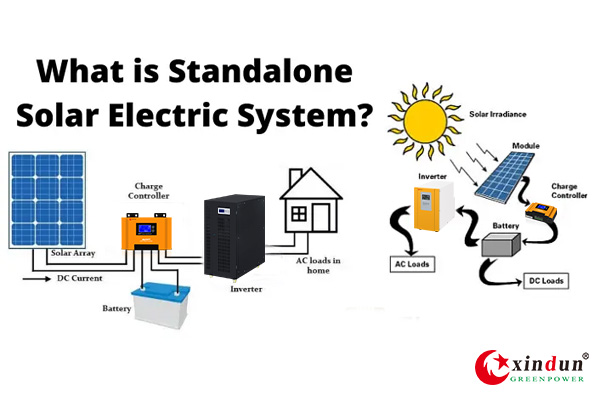
A simple stand alone photovoltaic system is an automatic solar system that produces electrical power to charge banks of batteries during the day for use at night when the suns energy is unavailable. After we understand the stand alone solar photovoltaic system operating principle, It will be easy for us to know how to use the stand alone photovoltaic system.How to set up and use a solar photovoltaic system has following steps:
Step 1:Firstly we should begins with gathering the basic ingredients of a solar power unit. In the stand alone photovoltaic system,we will need four major items – solar panels, charge controller, inverter, and a battery pack and also required breaker, meter, MC4 connector, and fuses among other things.
Step 2: Calculate our power load.All we have to do is to note down the home appliances that we use on a daily basis in the stand alone solar photovoltaic system, which include television, lights, fan, and so on. Next, add the time for which these appliances run in a day. We can also simplify this calculation by using an online off-grid load calculator.
Step 3: Select and charge the battery
A lead-acid or a lithium-ion battery stores solar power generated during the daytime and discharges it at night. We will need a power controller to monitor our battery’s charging. These come between the solar panels and the battery in the stand alone photovoltaic system.

Step 4: Set up the solar photovoltaic inverter
Solar arrays produce electricity in direct current (DC), but electrical appliances use power in the form of alternating current (AC). Solar photovoltaic inverter is a device that can transfer the DC current to AC current for electrical appliance. Pure sine wave inverter is the best choice for our stand alone solar photovoltaic system.
Step 5: Fix the solar panels on our roof
Once the battery, solar controller, and solar photovoltaic inverters are ready in our stand alone photovoltaic system, we need to get started with mounting and wiring the solar panels. Select the best spot for the panels on the roof or on open ground that receives an unhindered supply of the sun’s radiation.
Step 6: Connect the solar panels with battery
We need to connect the solar panels with the battery. In certain stand alone solar photovoltaic systems, these come paired together, so we don’t have to put in the additional effort. In cases that are given as a single unit, we need to make series and parallel connections.
Step 7: Setup stands for photovoltaic inverter and battery
We residential solar unit is incomplete without stands for the battery and photovoltaic inverter. Again, we have the option of building the stands or getting them. Once the allocated positions for the photovoltaic inverter and battery are ready, we can start working on the wiring.
After all the connection finished, We already have a stand alone photovoltaic system.We can start to use the solar power and experience the power of solar energy.
Xindun Power is a professional manufacturer of stand alone photovoltaic inverters and stand alone solar photovoltaic systems. The stand alone photovoltaic systems produced and designed by Xindun Power every month are exported to more than 100 countries and regions.Contact us we will provide one-stop support and service.